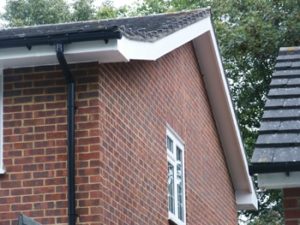Understanding Soffit and Cladding: Importance, Types, and InstallationSoffit and cladding are two essential components of a building’s outside that typically go undetected however play a vital role in both aesthetic appeals and functionality. While soffit refers to the product that covers the underside of eaves or overhangs, cladding describes the material used to the exterior of a building to provide it with a protective layer and an aesthetically appealing surface. This thorough post will look into the types, value, advantages, installation, and often asked concerns concerning soffit and cladding.Significance of Soffit and CladdingBoth soffits and cladding serve considerable functions for construction and architectural design: Soffit
Soffit
- Ventilation: Adequate soffit ventilation enables air flow in the roofing system area, which helps regulate temperature and humidity, lowering the threat of mold and rot.
- Defense: Soffits secure the rafters and eaves from water damage and pest invasion.
- Aesthetic Enhancement: Well-designed soffits boost the total appearance of a building, offering a finished appearance to roofing overhangs.
Cladding
- Insulation: Cladding helps to insulate the structure, improving energy effectiveness by keeping interior temperature levels.
- Weather Resistance: It safeguards the building from elements such as rain, wind, and snow.
- Aesthetic Appeal: With a range of products available, cladding permits architects to produce aesthetically sensational outsides.
- Maintenance: High-quality cladding minimizes the requirement for frequent maintenance and repairs.
Kinds of Soffit and CladdingSoffit TypesSoffits can come in various materials, including:
- Vinyl: Known for its low maintenance and weather-resistant properties.
- Aluminum: Durable and resistant to corrosion but may damage much easier.
- Wood: Offers visual appeal but requires regular maintenance and treatment for weather condition resistance.
- Fiber Cement: Combines sturdiness with the look of wood, resistant to rot and insects.
Cladding TypesThe selection of cladding materials can considerably impact both aesthetic appeals and performance. Common types consist of:
- Vinyl Cladding: Cost-effective, light-weight, and available in different designs and colors.
- Wood Cladding: Naturally stunning, however needs routine treatment and upkeep.
- Brick: Extremely durable and fireproof but more costly and needs professional installation.
- Stone and Stone Veneer: Offers a traditional appearance and unrivaled toughness, perfect for high end homes.
- Fiber Cement: Mimics wood or masonry with a fraction of the maintenance, resistant to weather and insects.
- Metal Cladding: Often utilized in modern-day styles, supplies an industrial appeal and substantially resists weathering.
Comparison of Soffit and Cladding MaterialsThe following table details the key features and attributes of numerous soffit Fascia And Soffit Specialists (https://giteadev3.Link/Soffit-repair4998) cladding materials:MaterialMaintenanceDurabilityAesthetic AppealCostInsulation PropertyVinyl SoffitLowMediumGreatLowLowAluminum SoffitMediumHighFairMediumLowWood SoffitHighLow to MediumExceptionalMediumLowFiber CementLowHighExceptionalMediumMediumVinyl CladdingLowMediumGoodLowMediumWood CladdingHighMediumOutstandingMediumMediumBrick CladdingLowHighExcellentHighHighStone VeneerMediumHighExcellentHighHighMetal CladdingLowHighFair to ExcellentMedium to HighLowInstallation of Soffit and CladdingThe installation procedure of soffit and cladding differs depending on product choice and local building codes. Nevertheless, comprehending the general actions involved can be useful:Steps for Installing Soffit
- Preparation: Gather all tools and products needed, consisting of panels, nails, and security equipment.
- Measurement: Measure the area precisely to cut soffit panels to the correct size.
- Ventilation: Ensure appropriate airflow by including vents where needed.
- Installation: Attach the panels starting from one side, ensuring they fit correctly into the established structure.
- Ending up Touches: Seal any spaces for insulation and looks.
Actions for Installing Cladding
- Structure Setup: Create a robust structure utilizing vertical battens if required.
- Insulation: If insulating, set up insulation boards before cladding.
- Cutting Panels: Measure and cut cladding panels based on design specs.
- Accessory: Secure panels utilizing appropriate fasteners, guaranteeing positioning and level.
- Sealing: Seal joints and edges for weather condition resistance.
Frequently Asked Questions (FAQs)1. What is the typical life expectancy of cladding products?The life expectancy differs extensively among products:
- Vinyl: 20-40 years
- Wood: 10-30 years (with maintenance)
- Brick and Stone: 50+ years
- Fiber Cement: 25-40 years
2. Is soffit installation essential?Yes, soffit installation is important for appropriate ventilation and securing the roofing structure from weather damage, pests, and rot.3. Can soffit be set up without cladding?Yes, soffit can be installed separately. Nevertheless, it is typically installed in conjunction with cladding for improved aesthetic appeals and defense.4. What aspects should be considered when choosing cladding?Important aspects include:
- Desired aesthetic
- Environment factors to consider
- Budget constraints
- Maintenance requirements
- Energy efficiency
5. Can I set up soffit and cladding myself?While DIY installation is possible for those with sufficient abilities, working with specialists makes sure quality workmanship and compliance with building regulations.Soffit and cladding are important components of a structure’s outside that substantially effect visual appeals, functionality, and energy performance. Understanding their types, benefits, and installation processes can aid house owners and contractors in making informed decisions. Whether using vinyl, wood, or fiber cement, selecting the best products and guaranteeing correct installation will improve the longevity and appeal of any structure while maintaining its protective qualities.
